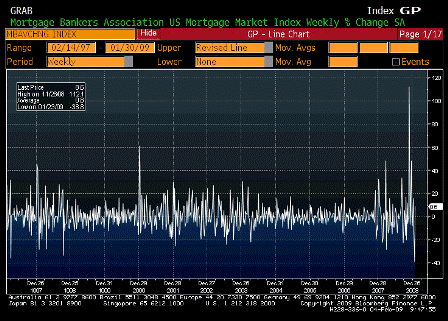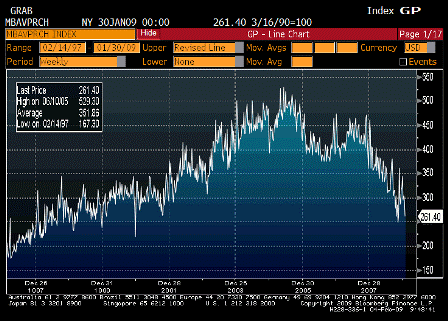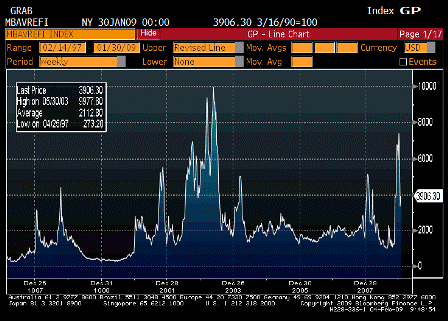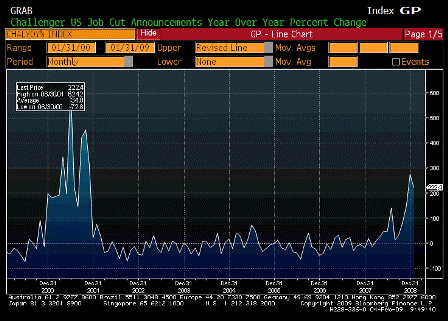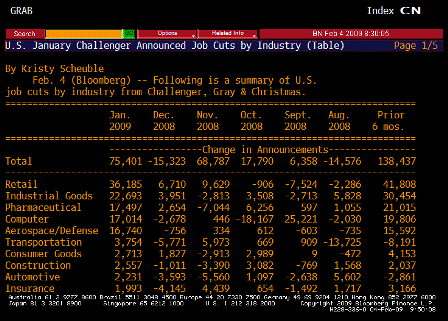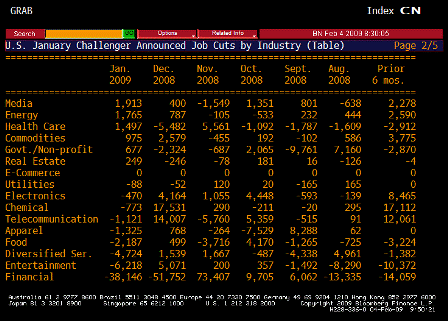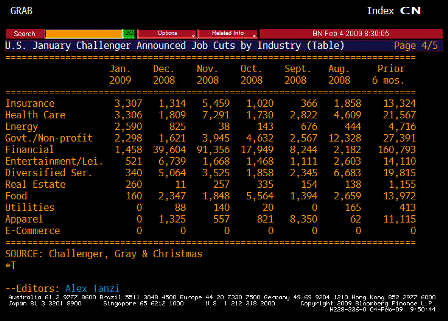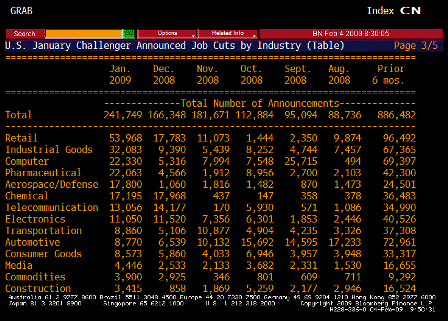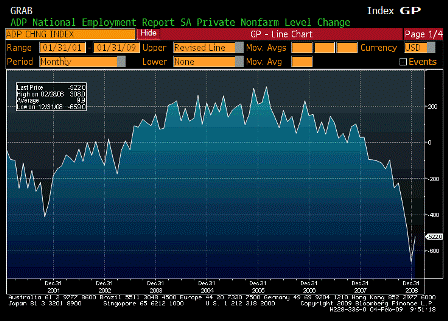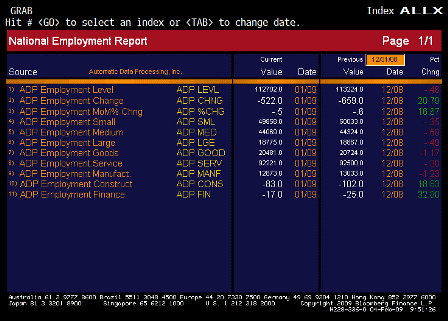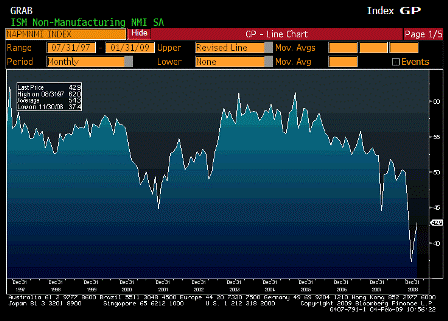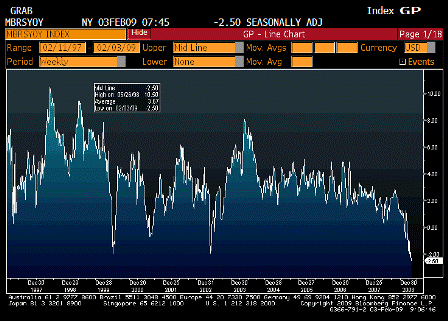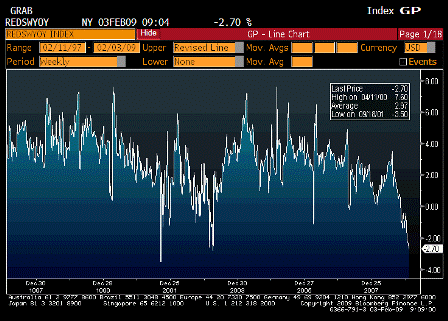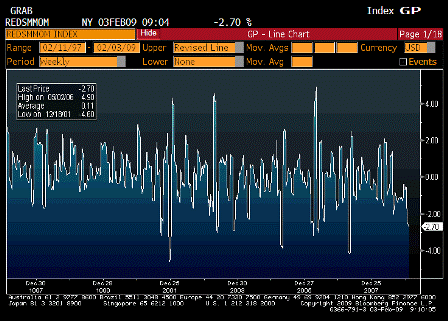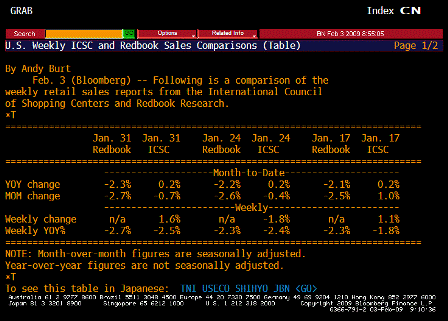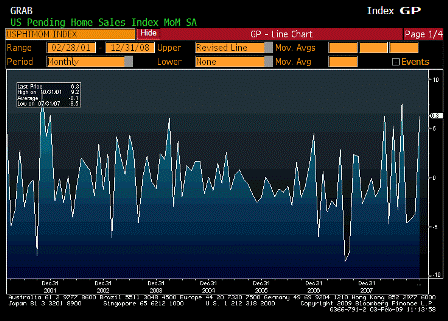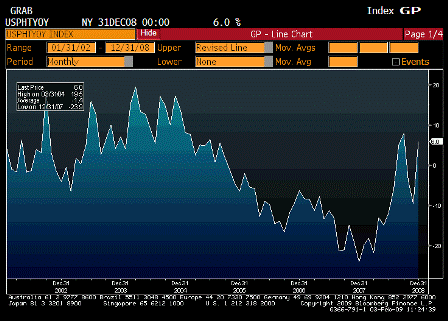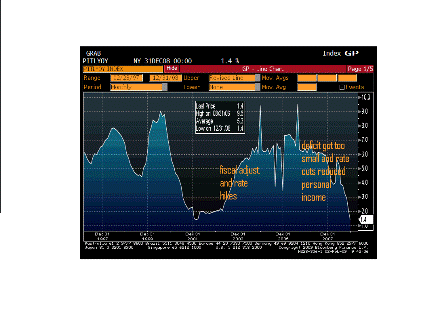- Nonfarm Productivity QoQ (Released 8:30 EST)
- Nonfarm Productivity TABLE 1 (Released 8:30 EST)
- Nonfarm Productivity TABLE 2 (Released 8:30 EST)
- Unit Labor Costs QoQ (Released 8:30 EST)
- Unit Labor Costs ALLX (Released 8:30 EST)
- Initial Jobless Claims (Released 8:30 EST)
- Continuing Claims (Released 8:30 EST)
- Jobless Claims ALLX (Released 8:30 EST)
- Factory Orders YoY (Released 10:00 EST)
- Factory Orders MoM (Released 10:00 EST)
- Factory Orders TABLE 1 (Released 10:00 EST)
- Factory Orders TABLE 2 (Released 10:00 EST)
- Factory Orders TABLE 3 (Released 10:00 EST)
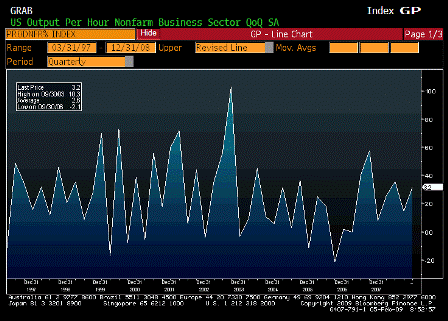
Nonfarm Productivity QoQ (4Q)
| Survey | 1.6% |
| Actual | 3.2% |
| Prior | 1.3% |
| Revised | 1.5% |
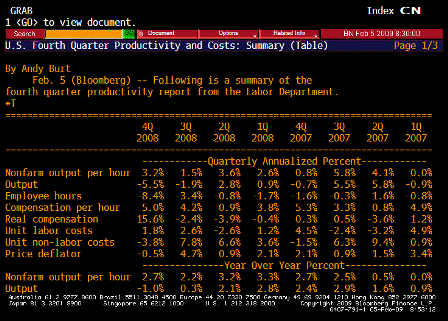
Nonfarm Productivity TABLE 1 (4Q)

Nonfarm Productivity TABLE 2 (4Q)
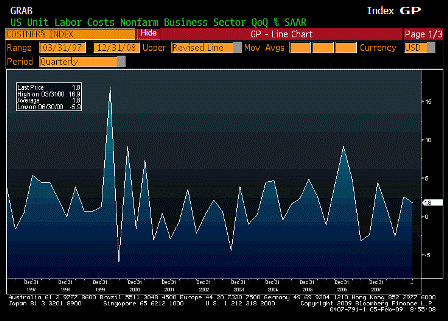
Unit Labor Costs QoQ (4Q)
| Survey | 2.9% |
| Actual | 1.8% |
| Prior | 2.8% |
| Revised | 2.6% |
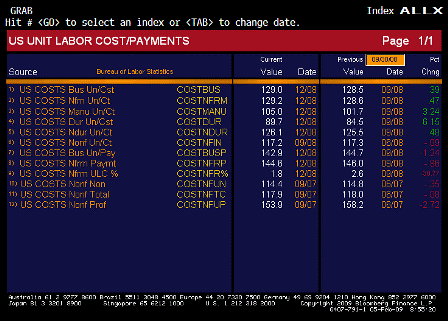
Unit Labor Costs ALLX (4Q)
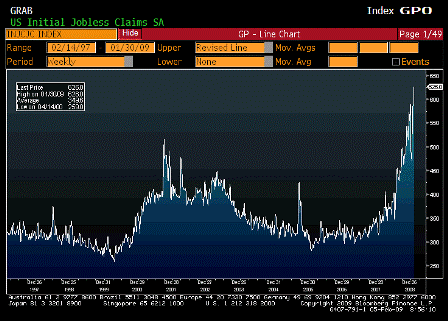
Initial Jobless Claims (Jan 31)
| Survey | 580K |
| Actual | 626K |
| Prior | 588K |
| Revised | 591K |
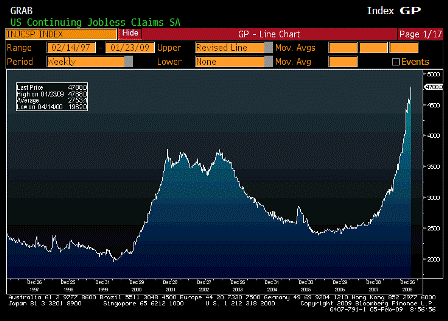
Continuing Claims (Jan 24)
| Survey | 4795K |
| Actual | 4788K |
| Prior | 4776K |
| Revised | 4768K |
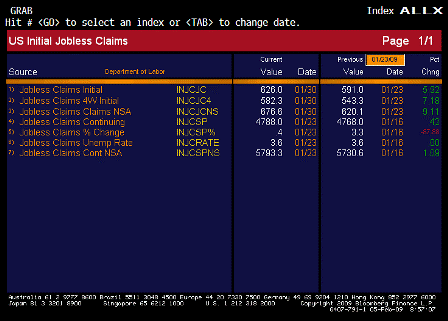
Jobless Claims ALLX (Jan 31)

Factory Orders YoY (Dec)
| Survey | n/a |
| Actual | -18.7% |
| Prior | -13.8% |
| Revised | n/a |
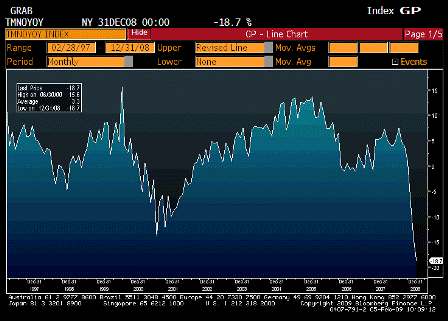
Factory Orders MoM (Dec)
| Survey | -3.1% |
| Actual | -3.9% |
| Prior | -4.6% |
| Revised | -6.5% |
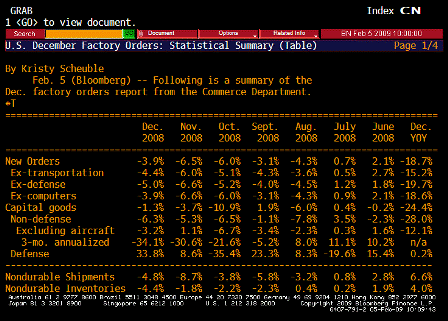
Factory Orders TABLE 1 (Dec)
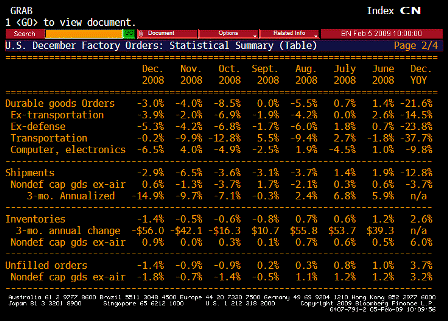
Factory Orders TABLE 2 (Dec)
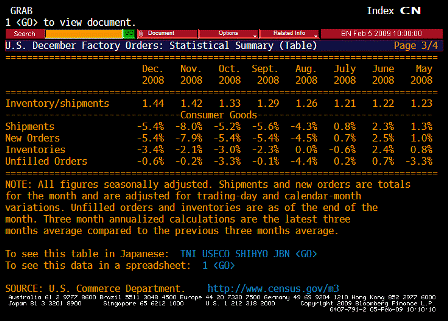
Factory Orders TABLE 3 (Dec)
[top]



